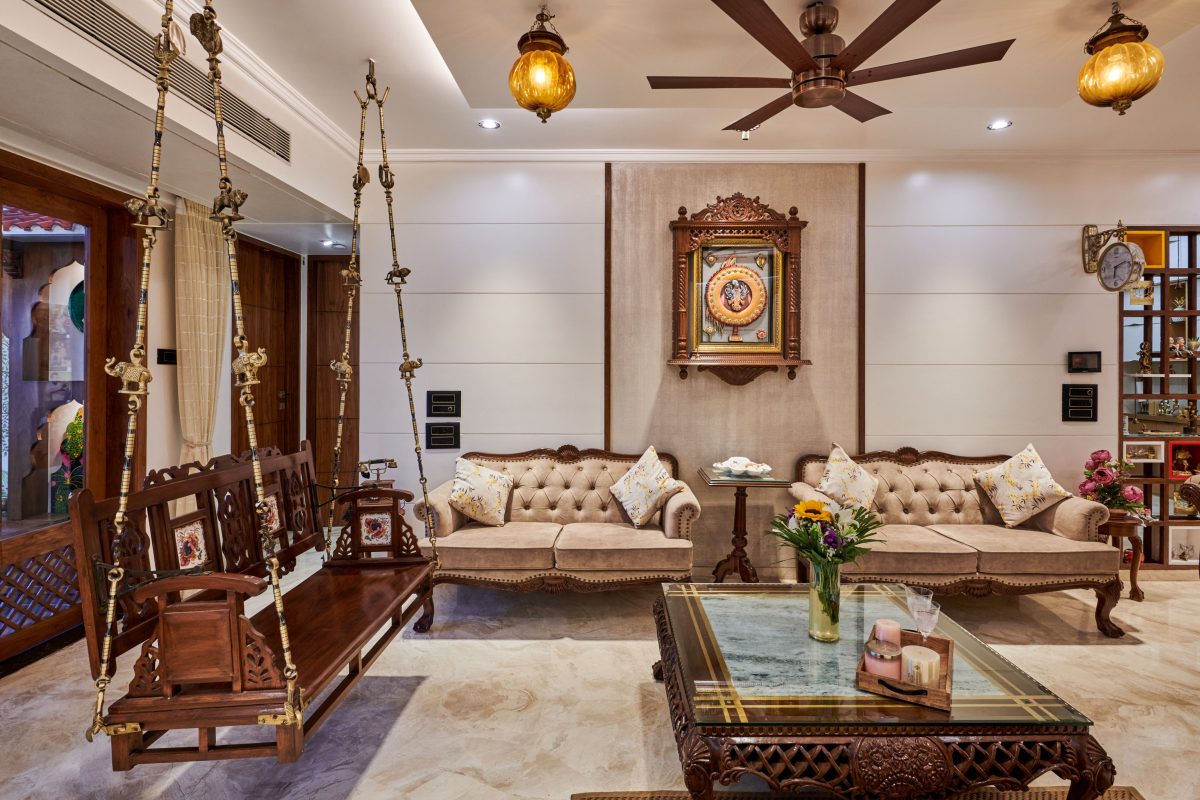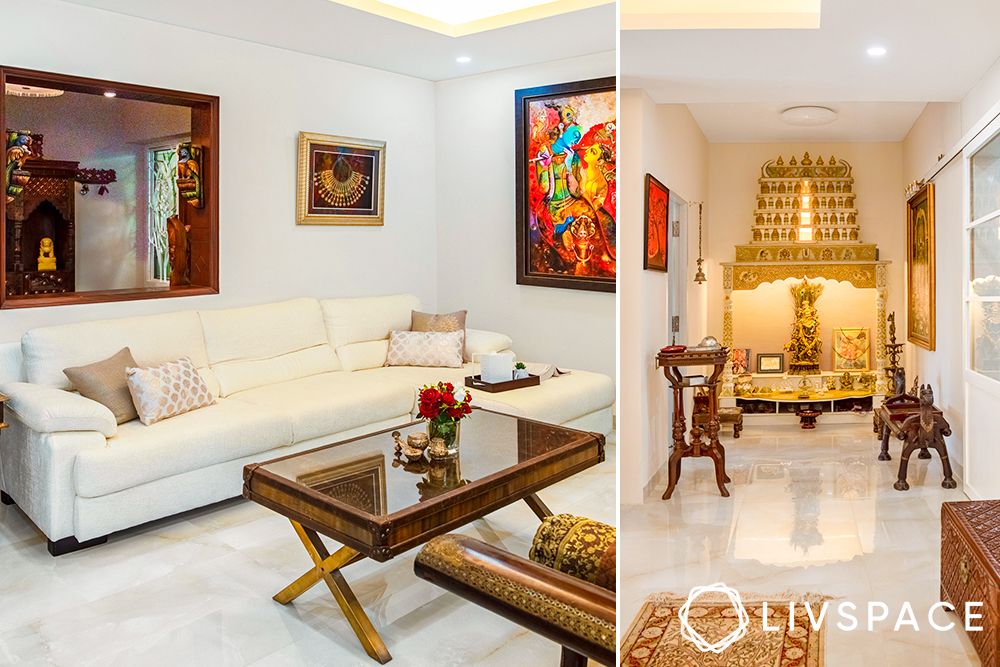Decorating a home is not just about aesthetics; it’s about creating an environment that reflects your personality and heritage. As someone who has immersed themselves in traditional Indian home interior decoration, I can assure you that this journey is as rewarding as it is enlightening. In this comprehensive guide, we will explore the various facets of traditional Indian decoration, from color palettes to materials, and share practical tips to bring a touch of India into your living spaces.
The Essence of Traditional Indian Home Decoration
Traditional Indian interior design is a blend of art, culture, and spirituality. The core principles involve using natural materials, vibrant colors, and intricate patterns. Here’s a look at the key elements that define this style:
Color Palette
Bright hues like red, orange, yellow, and green are predominant, often accented by deeper shades like indigo or maroon. These colors are not just visually appealing; they embody various cultural significances.
Understanding Color Significance
- Red: Symbolizes love and passion.
- Yellow: Represents knowledge and learning.
- Green: A sign of prosperity and peace.
- White: Stands for purity and innocence.
Materials and Textures
Natural materials play a significant role in traditional Indian homes. Wood, stone, bamboo, and clay are commonly used, providing both aesthetic and functional values.

Popular Materials
| Material | Characteristics | Uses |
|---|---|---|
| Wood | Warm, sturdy, and versatile | Furniture, doors, and frames |
| Stone | Durable and elegant | Flooring and wall decoration |
| Bamboo | Eco-friendly and lightweight | Furnishings and accents |
| Clay | Natural and rustic | Decorative pots and sculptures |
Key Elements of Traditional Indian Interior Design
Every traditional Indian home is unique, showcasing influences from various regions, religions, and communities. However, there are specific elements that are universally present.

Furniture Styles
Traditional Indian furniture is heavy, intricately carved, and often made from dark woods. Pieces like jhoolas (swing chairs), diwans (day beds), and chowkis (low stools) are common.
Pros and Cons of Traditional Furniture
| Pros | Cons |
|---|---|
| Durable and long-lasting | Can be heavy and cumbersome |
| Unique craftsmanship | May require regular maintenance |
| Rich cultural history | Often more expensive than mass-produced furniture |

Textiles and Fabrics
Textiles play a vital role in softening spaces and adding warmth. Traditional Indian fabrics like cotton, silk, and wool are often adorned with delicate embroidery, block printing, or tie-dye techniques.
Common Textiles
- Kanchipuram Silk: Known for its rich color and durability, perfect for upholstery.
- Banarasi Brocade: Beautiful for drapes and cushion covers.
- Khadi: Eco-friendly cotton fabric ideal for curtains.

Decorative Accessories and Artifacts
To bring your traditional Indian decor to life, accessorizing with the right artifacts is essential. These elements add character and depth to your spaces.
Wall Decor
From intricate wall hangings to decorative plates, wall decor can turn an ordinary wall into a stunning focal point.

Types of Wall Decor
- Warli Paintings: Tribal art that tells stories through geometric patterns.
- Brass Bells: Adds a rustic charm and a touch of spirituality.
- Handwoven Tapestries: Perfect for adding texture and color.
Lighting
Lighting is crucial in traditional Indian decor. Use different sources such as lanterns, diyas (oil lamps), and chandeliers to create warmth and ambiance.

Popular Lighting Options
- Brass Lanterns: Provide a warm glow and are often intricately designed.
- Crystal Chandeliers: Add luxury and elegance to the space.
- Terracotta Lamps: Bring in a rustic feel while being eco-friendly.
Creating a Cohesive Look
When decorating your home, it’s essential to maintain a cohesive look that ties all elements together.
Choosing a Theme
Decide on a specific theme or a combination of themes that resonate with you. Here are a few popular themes:
Popular Themes
- Rajasthani: Rich textiles and bright colors.
- Keralite: Use of natural materials and earthy colors.
- Bengali: Elegant simplicity with a focus on art and culture.
Balancing Modernity with Tradition
It’s okay to mix modern elements with traditional decor. For instance, pairing a contemporary sofa with traditional cushions can create a unique and inviting settings.
Tips for Designing Your Traditional Indian Home
Here are some practical tips to ensure your Indian home reflects your personal style while staying true to traditional aesthetics:
Incorporate Nature
Bring the outdoors in by incorporating plants and natural elements. Indoor plants not only enhance aesthetics but also purify the air.
Recommended Plants
- Bamboo Plant: Symbolizes luck.
- Money Plant: Known to attract prosperity.
- Areca Palm: Great for air purification.
Personal Touch
Add personal elements like family photographs, souvenirs from travels, or beloved books that resonate with your journey and experiences.
Seek Professional Help
If you are overwhelmed with choices, consider hiring an interior designer who specializes in traditional Indian decor to guide you.
Maintenance of Traditional Indian Decor
Like any style of decor, traditional Indian interiors require upkeep to maintain their charm.
Regular Cleaning
Make it a habit to regularly dust surfaces, clean textiles, and check for damages on wooden furniture.
Seasonal Upgrades
Change cushion covers, drapes, and other accessories seasonally to keep the decor fresh and inviting.
Conclusion
Decorating your home in a traditional Indian style is a beautiful journey that allows you to express your heritage and personality. With the right colors, materials, and decor elements, your home can become a reflection of rich cultural traditions and a space that feels warm and inviting. Embrace your creativity, draw inspiration from various aspects of Indian culture, and enjoy the process of making your home uniquely yours.
FAQs
What are the key features of traditional Indian home decor?
Key features include vibrant color palettes, use of natural materials, intricate patterns, and traditional furnishings like jhoolas and diwans.
How can I incorporate traditional Indian decor into a modern home?
You can mix contemporary furniture with traditional textiles, decorative accessories, and art to strike a balance between modernity and tradition.
What types of textiles are commonly used in Indian home decor?
Common textiles include cotton, silk, and wool, often found in forms like cushions, drapes, and upholstery fabrics featuring traditional patterns and techniques.
Which colors are best for traditional Indian interiors?
Bright and vibrant colors such as red, orange, yellow, and green are often used, complemented by deeper hues like indigo and maroon.
Can I blend different regional styles in my Indian home decor?
Absolutely! Blending various regional styles can create a unique and personalized space that reflects different aspects of Indian culture.